justagirl027
Just an awkward teenager who experiences things.. Yeah bye.
188 posts
Latest Posts by justagirl027
Lol what a plot twist
I have someone who loves me and I know that will love me forever, is this moment in my life where I realize that there’s different types of love to someone. I come to think that sometimes you don’t choose, but your heart does even if you try your best to remove everything of it, and I hate myself for that because I want to love with all my heart someone who deserves it but I’m so destroyed that it’s really tough, but not impossible. I hope the path that I’m taking is the right choice and everything ends well.
The thing I hate about quarantine is that I overthink too much and makes me wanna kill myself more
Is this a problem or is it normal?
Someone help me.
Tengo años sin escribir aquí holy cow
Que cosas no?
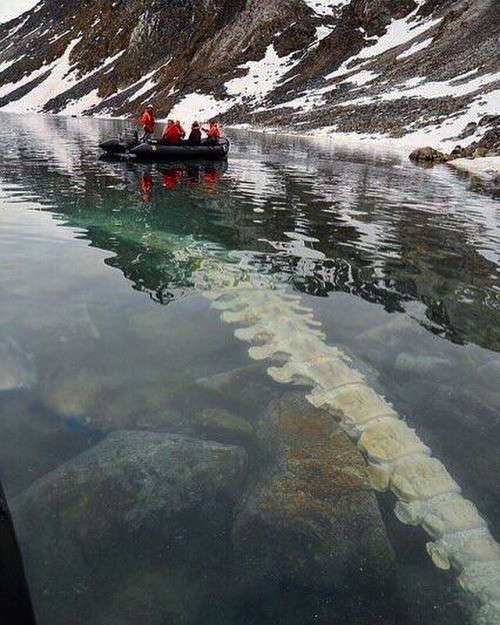
An intact Fin Whale vertebrae under the surface within a cove in Svalbard, Norway.
Loving someone who isn’t meant for you breaks your soul.
- C. H.

The Skull (Storm Trooper Helmet) Nebula in Cygnus.
Credit: Rod Pommier
“You see, we’re not meant to stop loving people. Our hearts don’t know what to to when they’ve lost someone who once filled them with joy. And, our minds, well, they don’t know how to erase the memories. So, we’re left with the remnants of what used to be, constantly searching for a way to make the picture whole again.”
— @sixwordssayitall (via sixwordssayitall)

Follow http://forthefuns.tumblr.com/ for the funniest memes
“As you get older you learn to leave behind more than just the stuffed animals from your childhood”
— @sixwordssayitall
Why Bennu? 10 Reasons
After traveling for two years and billions of kilometers from Earth, the OSIRIS-REx probe is only a few months away from its destination: the intriguing asteroid Bennu. When it arrives in December, OSIRIS-REx will embark on a nearly two-year investigation of this clump of rock, mapping its terrain and finding a safe and fruitful site from which to collect a sample.
The spacecraft will briefly touch Bennu’s surface around July 2020 to collect at least 60 grams (equal to about 30 sugar packets) of dirt and rocks. It might collect as much as 2,000 grams, which would be the largest sample by far gathered from a space object since the Apollo Moon landings. The spacecraft will then pack the sample into a capsule and travel back to Earth, dropping the capsule into Utah’s west desert in 2023, where scientists will be waiting to collect it.
This years-long quest for knowledge thrusts Bennu into the center of one of the most ambitious space missions ever attempted. But the humble rock is but one of about 780,000 known asteroids in our solar system. So why did scientists pick Bennu for this momentous investigation? Here are 10 reasons:
1. It’s close to Earth

Unlike most other asteroids that circle the Sun in the asteroid belt between Mars and Jupiter, Bennu’s orbit is close in proximity to Earth’s, even crossing it. The asteroid makes its closest approach to Earth every 6 years. It also circles the Sun nearly in the same plane as Earth, which made it somewhat easier to achieve the high-energy task of launching the spacecraft out of Earth’s plane and into Bennu’s. Still, the launch required considerable power, so OSIRIS-REx used Earth’s gravity to boost itself into Bennu’s orbital plane when it passed our planet in September 2017.
2. It’s the right size

Asteroids spin on their axes just like Earth does. Small ones, with diameters of 200 meters or less, often spin very fast, up to a few revolutions per minute. This rapid spinning makes it difficult for a spacecraft to match an asteroid’s velocity in order to touch down and collect samples. Even worse, the quick spinning has flung loose rocks and soil, material known as “regolith” — the stuff OSIRIS-REx is looking to collect — off the surfaces of small asteroids. Bennu’s size, in contrast, makes it approachable and rich in regolith. It has a diameter of 492 meters, which is a bit larger than the height of the Empire State Building in New York City, and rotating once every 4.3 hours.
3. It’s really old

Bennu is a leftover fragment from the tumultuous formation of the solar system. Some of the mineral fragments inside Bennu could be older than the solar system. These microscopic grains of dust could be the same ones that spewed from dying stars and eventually coalesced to make the Sun and its planets nearly 4.6 billion years ago. But pieces of asteroids, called meteorites, have been falling to Earth’s surface since the planet formed. So why don’t scientists just study those old space rocks? Because astronomers can’t tell (with very few exceptions) what kind of objects these meteorites came from, which is important context. Furthermore, these stones, that survive the violent, fiery decent to our planet’s surface, get contaminated when they land in the dirt, sand, or snow. Some even get hammered by the elements, like rain and snow, for hundreds or thousands of years. Such events change the chemistry of meteorites, obscuring their ancient records.
4. It’s well preserved

Bennu, on the other hand, is a time capsule from the early solar system, having been preserved in the vacuum of space. Although scientists think it broke off a larger asteroid in the asteroid belt in a catastrophic collision between about 1 and 2 billion years ago, and hurtled through space until it got locked into an orbit near Earth’s, they don’t expect that these events significantly altered it.
5. It might contain clues to the origin of life

Analyzing a sample from Bennu will help planetary scientists better understand the role asteroids may have played in delivering life-forming compounds to Earth. We know from having studied Bennu through Earth- and space-based telescopes that it is a carbonaceous, or carbon-rich, asteroid. Carbon is the hinge upon which organic molecules hang. Bennu is likely rich in organic molecules, which are made of chains of carbon bonded with atoms of oxygen, hydrogen, and other elements in a chemical recipe that makes all known living things. Besides carbon, Bennu also might have another component important to life: water, which is trapped in the minerals that make up the asteroid.
6. It contains valuable materials

Besides teaching us about our cosmic past, exploring Bennu close-up will help humans plan for the future. Asteroids are rich in natural resources, such as iron and aluminum, and precious metals, such as platinum. For this reason, some companies, and even countries, are building technologies that will one day allow us to extract those materials. More importantly, asteroids like Bennu are key to future, deep-space travel. If humans can learn how to extract the abundant hydrogen and oxygen from the water locked up in an asteroid’s minerals, they could make rocket fuel. Thus, asteroids could one day serve as fuel stations for robotic or human missions to Mars and beyond. Learning how to maneuver around an object like Bennu, and about its chemical and physical properties, will help future prospectors.
7. It will help us better understand other asteroids

Astronomers have studied Bennu from Earth since it was discovered in 1999. As a result, they think they know a lot about the asteroid’s physical and chemical properties. Their knowledge is based not only on looking at the asteroid, but also studying meteorites found on Earth, and filling in gaps in observable knowledge with predictions derived from theoretical models. Thanks to the detailed information that will be gleaned from OSIRIS-REx, scientists now will be able to check whether their predictions about Bennu are correct. This work will help verify or refine telescopic observations and models that attempt to reveal the nature of other asteroids in our solar system.
8. It will help us better understand a quirky solar force …

Astronomers have calculated that Bennu’s orbit has drifted about 280 meters (0.18 miles) per year toward the Sun since it was discovered. This could be because of a phenomenon called the Yarkovsky effect, a process whereby sunlight warms one side of a small, dark asteroid and then radiates as heat off the asteroid as it rotates. The heat energy thrusts an asteroid either away from the Sun, if it has a prograde spin like Earth, which means it spins in the same direction as its orbit, or toward the Sun in the case of Bennu, which spins in the opposite direction of its orbit. OSIRIS-REx will measure the Yarkovsky effect from close-up to help scientists predict the movement of Bennu and other asteroids. Already, measurements of how this force impacted Bennu over time have revealed that it likely pushed it to our corner of the solar system from the asteroid belt.
9. … and to keep asteroids at bay

One reason scientists are eager to predict the directions asteroids are drifting is to know when they’re coming too-close-for-comfort to Earth. By taking the Yarkovsky effect into account, they’ve estimated that Bennu could pass closer to Earth than the Moon is in 2135, and possibly even closer between 2175 and 2195. Although Bennu is unlikely to hit Earth at that time, our descendants can use the data from OSIRIS-REx to determine how best to deflect any threatening asteroids that are found, perhaps even by using the Yarkovsky effect to their advantage.
10. It’s a gift that will keep on giving
Samples of Bennu will return to Earth on September 24, 2023. OSIRIS-REx scientists will study a quarter of the regolith. The rest will be made available to scientists around the globe, and also saved for those not yet born, using techniques not yet invented, to answer questions not yet asked.
Read the web version of this week’s “Solar System: 10 Things to Know” article HERE.
Make sure to follow us on Tumblr for your regular dose of space: http://nasa.tumblr.com.
“Renew, release, let go. Yesterday’s gone. There’s nothing you can do to bring it back. You can’t “should’ve” done something. You can only DO something. Renew yourself. Release that attachment. Today is a new day!”
—
Steve Maraboli | @wnq-quotes
Unapologetically You: Reflections on Life and the Human Experience
(via wordsnquotes)

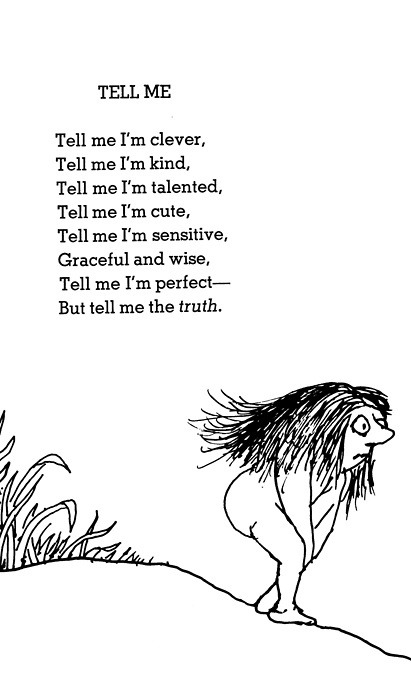
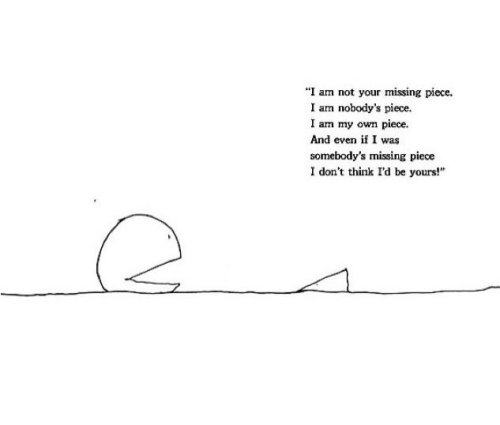



BOOK OF THE DAY:
Where the Sidewalk Ends: The Poems and Drawings of Shel Silverstein by Shel Silverstein
We have a confession: when we were about seven-years old, we dreamt about being poets. The first book to inspire us in becoming major bookworms was Shel Silverstein's Where the Sidewalk Ends. Now, the latest edition released in 2004, is different from an edition we read in the 90s. Containing 12 new poems, we were filled with zest and nostalgia when we laid our eyes once again on Silverstein’s clean illustrations! One of our favorite poems from the new edition is “Invitation.”
If you are a dreamer, come in, If you are a dreamer, a wisher, a liar, A hope-er, a pray-er, a magic bean buyer… If you’re a pretender, come sit by my fire For we have some flax-golden tales to spin. Come in! Come in!
Silly, imaginative and non-conformist, Silverstein explicitly plays on a person’s imagination. Unorthodox and playful, we recommend you read this book to everyone you know! Where the Sidewalk Ends inspired us to write our first poems and practice our recitation skills in front of any adult, who took the risk of listening to our mumbo jumbo. Nevertheless, we were in fact quirky, ourselves, too. Drawing inspiration from Peggy Ann McKay, we attempted to skip school one day by insisting we were sick. Although we did not fool our mother, we memorized Peggy Ann’s fun rhymes to get us a free day:
“I have the measles and the mumps, a gash, a rash, and purple bumps. My mouth is wet, my throat is dry, I’m going blind in my right eye.”
In case you haven’t noticed yet, this is not an educational or intellectual recommendation, this is a suggestion from the heart. This is one of our personal favorites. We have many memories with Silverstein’s prose, and we dearly wish your revisit one of the most fun poetry books in literature.
Facebook | Instagram | Twitter | Pinterest | Society6
“They ran into astroids every time they explored the galaxy, but like planets they have lasted for centuries.”
— they were elements of ruins but were invincible like legends by @jwfeelings (via jwfeelings)
Two Steps Forward in the Search for Life on Mars
We haven’t found aliens but we are a little further along in our search for life on Mars thanks to two recent discoveries from our Curiosity Rover.

We detected organic molecules at the harsh surface of Mars! And what’s important about this is we now have a lot more certainty that there’s organic molecules preserved at the surface of Mars. We didn’t know that before.
One of the discoveries is we found organic molecules just beneath the surface of Mars in 3 billion-year-old sedimentary rocks.

Second, we’ve found seasonal variations in methane levels in the atmosphere over 3 Mars years (nearly 6 Earth years). These two discoveries increase the chances that the record of habitability and potential life has been preserved on the Red Planet despite extremely harsh conditions on the surface.

Both discoveries were made by our chem lab that rides aboard the Curiosity rover on Mars.

Here’s an image from when we installed the SAM lab on the rover. SAM stands for “Sample Analysis at Mars” and SAM did two things on Mars for this discovery.
One - it tested Martian rocks. After the arm selects a sample of pulverized rock, it heats up that sample and sends that gas into the chamber, where the electron stream breaks up the chemicals so they can be analyzed.
What SAM found are fragments of large organic molecules preserved in ancient rocks which we think come from the bottom of an ancient Martian lake. These organic molecules are made up of carbon and hydrogen, and can include other elements like nitrogen and oxygen. That’s a possible indicator of ancient life…although non-biological processes can make organic molecules, too.
The other action SAM did was ‘sniff’ the air.

When it did that, it detected methane in the air. And for the first time, we saw a repeatable pattern of methane in the Martian atmosphere. The methane peaked in the warm, summer months, and then dropped in the cooler, winter months.

On Earth, 90 percent of methane is produced by biology, so we have to consider the possibility that Martian methane could be produced by life under the surface. But it also could be produced by non-biological sources. Right now, we don’t know, so we need to keep studying the Mars!

One of our upcoming Martian missions is the InSight lander. InSight, short for Interior Exploration using Seismic Investigations, Geodesy and Heat Transport, is a Mars lander designed to give the Red Planet its first thorough checkup since it formed 4.5 billion years ago. It is the first outer space robotic explorer to study in-depth the “inner space” of Mars: its crust, mantle, and core.
Finding methane in the atmosphere and ancient carbon preserved on the surface gives scientists confidence that our Mars 2020 rover and ESA’s (European Space Agency’s) ExoMars rover will find even more organics, both on the surface and in the shallow subsurface.
Read the full release on today’s announcement HERE.
Make sure to follow us on Tumblr for your regular dose of space: http://nasa.tumblr.com.
“I’ll never get tired of saying, “Thank you for giving me the love that everyone wish to have.”…….(the story continues)”
— thousand-miles-lovestory
“Kill the part of you that believes it can’t survive without someone else.”
— Sade Andria Zabala




Understanding Passion - an Interview with Zeb Andrews
Zeb Andrews is not your typical photographer. He is not some run-off-the-mill artist. Zeb is one of those people who lives and breathes photography and accepts it in all its forms. He practices it as a discipline, works it like an art form, and lives by it as a personal creed.




Alia Wilhelm: Relationships and Intimacy on Film
Rookie Mag contributer Alia Wilhelm set herself a project to document intimate moments between couples. She chose to shoot this sries on film and talked to us about her reasons for this.
“how did you know that it was over? that you should leave him?”, she asks her best friend. “simple. i asked myself two questions: do i love him? and, does he make me happy?” “and?” “yes, yes i love him. but no, he doesn’t make me happy. and just being in love with someone isn’t enough. if that someone can’t make you happy, all the love in the world can’t help you. you will just end up destroying yourself for someone who isn’t even worth it.”
e.s. // all the love in the world can’t help you. (via pessimisticandrealistic)
It’s not easy this separation thing I don’t know how to pause my feelings my thoughts my worries so I wait until you decide your next move play or stop
(via sixwordssayitall)


This is Kjell Lindgren. He’s a NASA astronaut who just got back from 5 months on the International Space Station. There are two reasons why this picture is hilarious:
His wife is flawless and makes bad space puns to make him do household chores.
I have that shirt. Thousands of people have that shirt. That shirt is available at Target. Which means actual astronaut Kjell Lindgren, with his wardrobe already full of NASA-issued and logo-emblazoned clothes, was at Target, saw a NASA shirt, and was like, “Yes, I am buying this because this is what I want to spend my actual astronaut salary on.”
tl;dr NASA employs a bunch of fucking nerds
The Moon in Motion
Happy New Year! And happy supermoon! Tonight, the Moon will appear extra big and bright to welcome us into 2018 – about 6% bigger and 14% brighter than the average full Moon. And how do we know that? Well, each fall, our science visualizer Ernie Wright uses data from the Lunar Reconnaissance Orbiter (LRO) to render over a quarter of a million images of the Moon. He combines these images into an interactive visualization, Moon Phase and Libration, which depicts the Moon at every day and hour for the coming year.
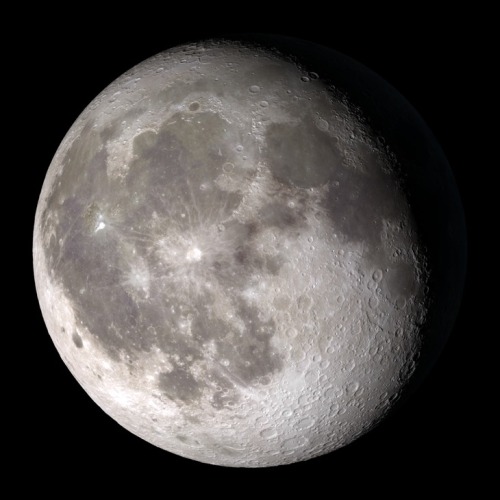
Want to see what the Moon will look like on your birthday this year? Just put in the date, and even the hour (in Universal Time) you were born to see your birthday Moon.
Our Moon is quite dynamic. In addition to Moon phases, our Moon appears to get bigger and smaller throughout the year, and it wobbles! Or at least it looks that way to us on Earth. This wobbling is called libration, from the Latin for ‘balance scale’ (libra). Wright relies on LRO maps of the Moon and NASA orbit calculations to create the most accurate depiction of the 6 ways our Moon moves from our perspective.
1. Phases

The Moon phases we see on Earth are caused by the changing positions of the Earth and Moon relative to the Sun. The Sun always illuminates half of the Moon, but we see changing shapes as the Moon revolves around the Earth. Wright uses a software library called SPICE to calculate the position and orientation of the Moon and Earth at every moment of the year. With his visualization, you can input any day and time of the year and see what the Moon will look like!
2. Shape of the Moon

Check out that crater detail! The Moon is not a smooth sphere. It’s covered in mountains and valleys and thanks to LRO, we know the shape of the Moon better than any other celestial body in the universe. To get the most accurate depiction possible of where the sunlight falls on the lunar surface throughout the month, Wright uses the same graphics software used by Hollywood design studios, including Pixar, and a method called ‘raytracing’ to calculate the intricate patterns of light and shadow on the Moon’s surface, and he checks the accuracy of his renders against photographs of the Moon he takes through his own telescope.

3. Apparent Size

The Moon Phase and Libration visualization shows you the apparent size of the Moon. The Moon’s orbit is elliptical, instead of circular - so sometimes it is closer to the Earth and sometimes it is farther. You’ve probably heard the term “supermoon.” This describes a full Moon at or near perigee (the point when the Moon is closest to the Earth in its orbit). A supermoon can appear up to 14% bigger and brighter than a full Moon at apogee (the point when the Moon is farthest from the Earth in its orbit).
Our supermoon tonight is a full Moon very close to perigee, and will appear to be about 14% bigger than the July 27 full Moon, the smallest full Moon of 2018, occurring at apogee. Input those dates into the Moon Phase and Libration visualization to see this difference in apparent size!
4. East-West Libration
Over a month, the Moon appears to nod, twist, and roll. The east-west motion, called ‘libration in longitude’, is another effect of the Moon’s elliptical orbital path. As the Moon travels around the Earth, it goes faster or slower, depending on how close it is to the Earth. When the Moon gets close to the Earth, it speeds up thanks to an additional pull from Earth’s gravity. Then it slows down, when it’s farther from the Earth. While this speed in orbital motion changes, the rotational speed of the Moon stays constant.
This means that when the Moon moves faster around the Earth, the Moon itself doesn’t rotate quite enough to keep the same exact side facing us and we get to see a little more of the eastern side of the Moon. When the Moon moves more slowly around the Earth, its rotation gets a little ahead, and we see a bit more of its western side.
5. North-South Libration

The Moon also appears to nod, as if it were saying “yes,” a motion called ‘libration in latitude’. This is caused by the 5 degree tilt of the Moon’s orbit around the Earth. Sometimes the Moon is above the Earth’s northern hemisphere and sometimes it’s below the Earth’s southern hemisphere, and this lets us occasionally see slightly more of the northern or southern hemispheres of the Moon!
6. Axis Angle

Finally, the Moon appears to tilt back and forth like a metronome. The tilt of the Moon’s orbit contributes to this, but it’s mostly because of the 23.5 degree tilt of our own observing platform, the Earth. Imagine standing sideways on a ramp. Look left, and the ramp slopes up. Look right and the ramp slopes down.
Now look in front of you. The horizon will look higher on the right, lower on the left (try this by tilting your head left). But if you turn around, the horizon appears to tilt the opposite way (tilt your head to the right). The tilted platform of the Earth works the same way as we watch the Moon. Every two weeks we have to look in the opposite direction to see the Moon, and the ground beneath our feet is then tilted the opposite way as well.
So put this all together, and you get this:
Beautiful isn’t it? See if you can notice these phenomena when you observe the Moon. And keep coming back all year to check on the Moon’s changing appearance and help plan your observing sessions.
Follow @NASAMoon on Twitter to keep up with the latest lunar updates.
Make sure to follow us on Tumblr for your regular dose of space: http://nasa.tumblr.com.
Miles between us don’t erase memories.
@sixwordssayitall (via sixwordssayitall)
Yesterday you looked at me like you love me and today you didn’t
@sixwordssayitall (via sixwordssayitall)








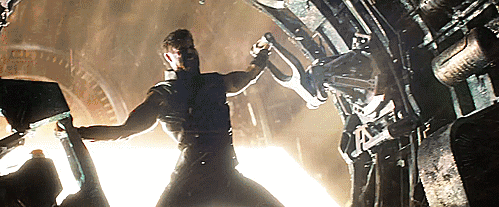

Avengers: Infinity War (2018)
i just wanna go. not even pack my things. i wanna travel light. so light, that I won’t even feel myself. i just wanna leave everything behind and go. i don’t even care where my feet might my take me. i just wanna keep going until my feet hurt. i just wanna leave and never come back. ever again.
kiikiiriiki (via wnq-writers)
Lessons I learnt this year. #1 Don’t make home out of people. They leave, they leave all the frigging time. Save your heart from the sorrows, be independent and put yourself first. Self love is not selfish. #2 Dreams do come true after all but that doesn’t mean you can sit still and do nothing. You have to work your ass off for it then it’ll surely come your way. #3 Friendship doesn’t fill the gas tank. Not gonna elaborate on this, well all know this! #4 Love yourself. Buy that dress even though it comes with a hefty price tag, read that book that you have in your shelf for the longest time, wear make up , paint your face as your heart desires, sleep for 12 hours , sleep the whole weekend away, sleep for 1 hour if that’s what you want. This is your life, you can’t let people dictate what’s supposed to be yours.
singlaughscreamlikenobodycare, writing prompt #73: Write about the lessons you learned this year. (via wnq-writers)
December. It’s the time for lovers and lonely hearts. It’s a month that can go both ways..when the snow on the ground can remind you of the cold that wells in your heart or the warmth that will soon embrace you in your lovers arms. It’s an ending, when you finally pick up the pieces of your broken heart and close the chapter to start a new one.
j0ethejellybean, writing prompt #72, write about December (via wnq-writers)
My heart was a stone wall you broke through anyway.
Louise Glück, Marina
Read more at wordsnquotes
(via wnq-writers)